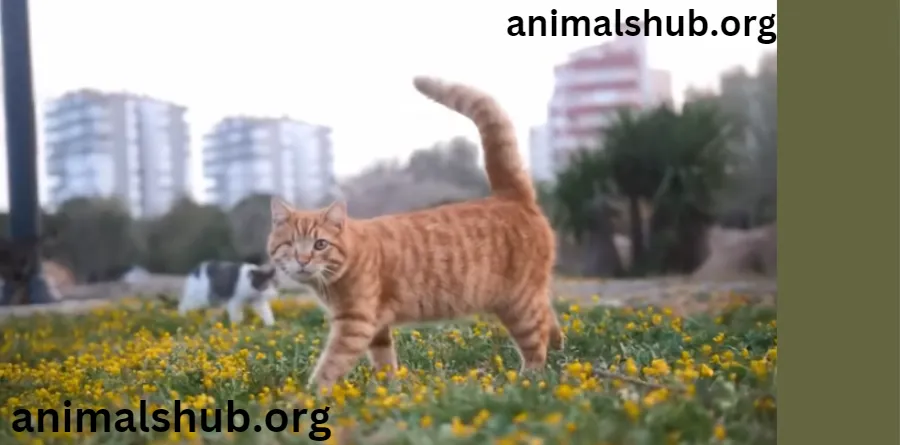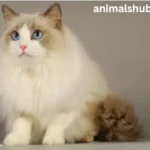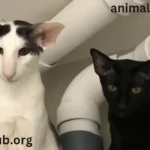A Comprehensive Guide To Their Beauty And Functionality
Cats are acknowledged for their beauty and agility, and their tails play a crucial role in their appearance and characteristics. Long-tailed cats are particularly fascinating as their extended tails serve several critical functions, aiding in balance, communication, and the development of hunting skills. In addition to being extraordinary, a cat’s long tail serves several critical capabilities, aiding in stability, conversation, and the development of looking abilities. In this text, we’ll take a look at the genetic foundation of lengthy tails, and their realistic packages, and highlight some interesting breeds known for their lengthy tails. Read more about Cat information at animalshub.org.
The Genetics Of Long Tails
The period of a cat’s tail is determined by genetics. This trait is based on the T gene, which performs an important position in figuring out tail duration. Mutations or mutations on this gene can result in tails starting from short to full period. For instance, some breeds, such as the Manx, are known for their very short tails or even complete lack of tails due to these genetic mutations. In contrast, cat breeds with long tails typically have the standard T gene, resulting in tails that are on average 8 to 12 inches long.
Functions Of Long Tails
1. Balance And Coordination
The most important characteristic of tail length in cats is its role in maintaining balance. Cats are renowned for their dexterity and ability to land on their feet when falling from heights, with their tail playing a significant part in this ability. The tail acts as a counterweight and helps the cat keep balance while walking on slender surfaces or making unique jumps. This balance is especially crucial for the duration of excessive-velocity sports or in hard terrain.
2. Communication
Cats use their tails as a method of conversation and express numerous emotions and dreams. A straight, comfortable tail usually suggests a satisfied or assured cat, but at the same time, a raised tail suggests fear or aggression. Unique cat features, such as the tail’s position and movement, can reveal a cat’s emotional state. Observing these tail signals can enhance your understanding of feline behavior and improve your communication with both cats and people.
3. Fear Or Aggression.
A cat’s tail can indicate its intellectual state. Test your verbal exchange Hunting and Maneuvering The tail also plays a crucial role in search. It helps with path and stability while turning and facilitates the cat to regulate its position whilst turning quickly and chasing prey. Feline tail variations, such as a long tail, enhance accuracy and balance, which are essential for a successful hunt.
Many cat breeds are known for their distinctive long tails, each reflecting unique traits and behaviors Breeds Known for Their Long Tails Many cat breeds are recognized for his or her lengthy tails, and each breed reveals specific traits and behaviors. Maine Coon – Often described as having a long, hairy tail, the Maine Coon’s tail can develop up to 18 inches. The lengthy tail of this breed gives balance and protection from the bloodless. Their tails are not simplest practical but also deliver a beautiful look.
More information
4. Hunting And Maneuvering
The tail also plays a crucial role in searching. It helps with path and stability while turning and facilitates the cat to regulate its position whilst turning quickly and chasing prey. A long tail allows accuracy and balance, which is important for a successful search.
Breeds Known for Their Long Tails
- Many cat breeds are recognized for his or her lengthy tails, and each breed reveals specific traits and behaviors.
- Maine Coon – Often described as having a long, hairy tail, the Maine Coon’s tail can develop up to 18 inches. The lengthy tail of this breed gives balance and protection from the bloodless. Their tails are not simplest practical but also deliver a beautiful look.
- Siamese – Siamese cats are recognized for his or her narrow bodies and lengthy tails. The length of the tail fits their slim body and adds to their stunning appearance. As one of the notable cats with distinctive tails, Siamese cats are active and expressive, using their tails for balance and communication. Active and expressive, Siamese use their tails for balance and verbal exchange.
- Balinese cats: Known for their high-priced coats and long hairy tails, Balinese cats are intently associated with Siamese cats, but have a much broader tail. Their tails decorate their appearance and are an important part of their elegant demeanor.
- Norwegian Forest Cat – With its lengthy tail, the Norwegian Forest Cat is customized to less warm climates. The tail presents balance and maneuverability on icy, uneven ground. Their tail gives them strength and flexibility.
- Egyptian Mau – This breed is distinguished using its lengthy, skinny tail and spotted fur. The period of the tail will increase their agility and dexterity, that’s essential for his or her ability to hunt and climb.
- Turkish Angora: The Turkish Angora has a cute tail that is long and cute. Their tails supplement their narrow bodies and assist with balance and agility.
- Somali: Abyssinian lengthy-haired type. The Somali cat has a bushy tail which adds to its adorable and playful appearance. The tail keeps balance and particular moves, making it ideal for lively play and exploration.
Record Holders And Notable Mentions
Long-tailed cats are listed inside the file books for the great variety of cat tails. For example, the longest tail ever recorded in a domestic cat shows no longer the best genetic variety but also the splendor of the individual. Ultimately, tail length and cat behavior go hand in hand. Long tails are not merely an appealing trait but play a vital role in balance, communication, and hunting, significantly contributing to a cat’s overall agility and charm.
Conclusion
Finally, long tails aren’t the most appealing characteristic of cats. They play a vital position in stability, conversation, and looking, and make contributions to a cat’s ordinary agility and charm. From the majestic Maine Coon to the lovely Siamese, every breed makes use of its tail uniquely and tremendously which only provides our appreciation for those first-rate animals. A cat’s long tail is a fundamental part of its anatomy and character, whether for balance, expression, or searching





